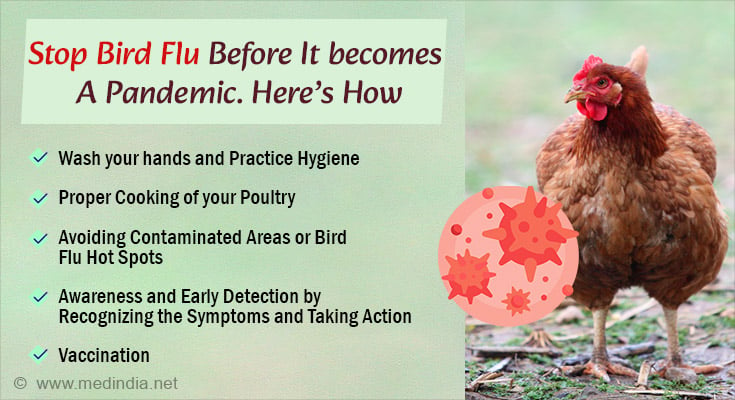- H5N1 bird flu is highly deadly, with a 60% mortality rate in humans
- Recent cases, including transmission from infected cows, raise pandemic concerns
- Preventive measures like handwashing and early detection are crucial in containing outbreaks
In recent discussions among experts, concerns have escalated regarding the potential for the H5N1 strain of bird flu to spark a global pandemic. This strain, known for its ability to infect not only birds but also humans, poses significant risks and challenges in disease control efforts (1✔ ✔Trusted Source
Avian Influenza A(H5N1) – United States of America
).
H5N1, a subtype of
With a 60% mortality rate in humans, H5N1 bird flu demands vigilance #birdflu #h5n1 #medindia’
Advertisement
Can Bird Flu Cause the Next Pandemic?
With recent cases of H5N1 transmission to humans, including a concerning instance in Texas linked to infected cows, the possibility of a widespread outbreak looms large. Experts warn of the virus’s potential to reach a tipping point, triggering a global health crisis akin to or even surpassing the scale of the COVID19 pandemic. The fatality rate associated with H5N1 infections, coupled with its capacity to spread from birds to humans, underscores the urgent need for vigilance and proactive measures to prevent its escalation.
Advertisement
Symptoms and Signs of Bird Flu
Mild Symptoms:
- Fever
- Cough
- Sore throat
- Muscle aches
- Headache
- Fatigue
Moderate Symptoms:
- Runny or stuffy nose
- Body aches
- Chills
- Watery eyes
- Sneezing
Severe Symptoms:
- Difficulty breathing or shortness of breath
- Chest pain
- Persistent high fever
- Bluish lips or face
Signs of Complications:
- Pneumonia
- Acute respiratory distress syndrome (ARDS)
- Organ failure
If you experience severe symptoms or have been exposed to infected birds or poultry, seek medical attention promptly. Early diagnosis and treatment can be critical in managing the disease effectively.
Advertisement
Bird Flu: Strategies for Prevention and Control
While the spread of bird flu remains a serious concern, preventive measures offer hope in averting a pandemic. Practices such as avoiding direct contact with birds, thorough handwashing, and ensuring proper cooking of poultry can significantly reduce the risk of transmission. Additionally, heightened awareness, early detection, and swift response to suspected cases are vital in containing outbreaks and safeguarding public health.
At the end of the day, though, it’s going to take all of us working together to beat bird flu. We need to stay informed and follow the advice of experts. And if we do start to see signs of an outbreak, we need to act quickly to contain it. It’s not going to be easy, but if we all do our part, we can prevent bird flu from becoming the next big pandemic.
Reference:
- Avian Influenza A(H5N1) – United States of America – (https://www.who.int/emergencies/disease-outbreak-news/item/2024-DON512)
Source-Medindia



